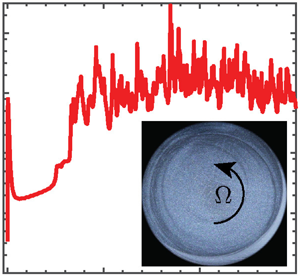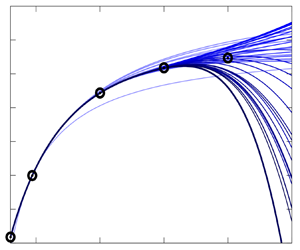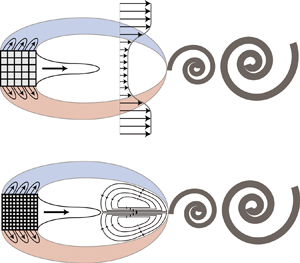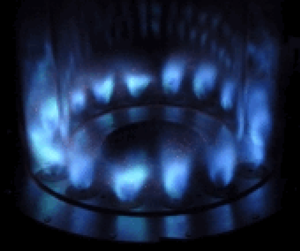Refine listing
Actions for selected content:
1417033 results in Open Access
Jordanian Nurses’ Perceptions of Disaster Preparedness and Core Competencies
-
- Journal:
- Disaster Medicine and Public Health Preparedness / Volume 18 / 2024
- Published online by Cambridge University Press:
- 24 April 2024, e96
-
- Article
-
- You have access
- Open access
- HTML
- Export citation
EUR volume 64 issue 3 Cover and Back matter
-
- Journal:
- European Journal of Sociology / Archives Européennes de Sociologie / Volume 64 / Issue 3 / December 2023
- Published online by Cambridge University Press:
- 23 April 2024, pp. b1-b9
-
- Article
-
- You have access
- Export citation
Elasto-inertial instability in torsional flows of shear-thinning viscoelastic fluids
-
- Journal:
- Journal of Fluid Mechanics / Volume 985 / 25 April 2024
- Published online by Cambridge University Press:
- 23 April 2024, A37
-
- Article
- Export citation
Earthquake in Turkey: The Triangle of Life and Disaster Kits Saves Lives
-
- Journal:
- Disaster Medicine and Public Health Preparedness / Volume 18 / 2024
- Published online by Cambridge University Press:
- 23 April 2024, e74
-
- Article
- Export citation
Global perspectives on death and immortality
-
- Journal:
- Religious Studies / Volume 60 / Issue S1 / May 2024
- Published online by Cambridge University Press:
- 23 April 2024, pp. S1-S3
- Print publication:
- May 2024
-
- Article
-
- You have access
- Open access
- HTML
- Export citation
Arbitrary-order sensitivities of the incompressible base flow and its eigenproblem
-
- Journal:
- Journal of Fluid Mechanics / Volume 985 / 25 April 2024
- Published online by Cambridge University Press:
- 23 April 2024, A32
-
- Article
- Export citation
Some Challenges for Moreau's Theory of Wrongful Discrimination
-
- Journal:
- Dialogue: Canadian Philosophical Review / Revue canadienne de philosophie / Volume 63 / Issue 1 / April 2024
- Published online by Cambridge University Press:
- 23 April 2024, pp. 21-29
-
- Article
-
- You have access
- Open access
- HTML
- Export citation
From Didactics to Disasters: Unveiling CBRNe and Counter-Terrorism Medicine Training in US Medical Schools
-
- Journal:
- Prehospital and Disaster Medicine / Volume 39 / Issue 4 / August 2024
- Published online by Cambridge University Press:
- 23 April 2024, pp. 287-290
- Print publication:
- August 2024
-
- Article
- Export citation
The culture/class broths where women’s desires and tastes are marinated - Katherine Appleford, Classifying Fashion, Fashioning Class. Making Sense of Women’s Practices, Perceptions and Tastes, Routledge, London & New York, 2021.
-
- Journal:
- European Journal of Sociology / Archives Européennes de Sociologie / Volume 64 / Issue 3 / December 2023
- Published online by Cambridge University Press:
- 23 April 2024, pp. 439-446
-
- Article
- Export citation
Multiple Consciousness and Philosophical Method
-
- Journal:
- Dialogue: Canadian Philosophical Review / Revue canadienne de philosophie / Volume 63 / Issue 1 / April 2024
- Published online by Cambridge University Press:
- 23 April 2024, pp. 59-73
-
- Article
-
- You have access
- Open access
- HTML
- Export citation
The Oedipal dynamic of ‘The Sorcerer's Apprentice’ (from Fantasia, 1940) – Psychiatry in film
-
- Journal:
- The British Journal of Psychiatry / Volume 224 / Issue 5 / May 2024
- Published online by Cambridge University Press:
- 23 April 2024, p. 149
- Print publication:
- May 2024
-
- Article
-
- You have access
- HTML
- Export citation
BJP volume 224 issue 5 Cover and Back matter
-
- Journal:
- The British Journal of Psychiatry / Volume 224 / Issue 5 / May 2024
- Published online by Cambridge University Press:
- 23 April 2024, p. b1
- Print publication:
- May 2024
-
- Article
-
- You have access
- Export citation
The effect of permeability on the flow structure of porous square cylinders
-
- Journal:
- Journal of Fluid Mechanics / Volume 985 / 25 April 2024
- Published online by Cambridge University Press:
- 23 April 2024, A29
-
- Article
- Export citation
BJP volume 224 issue 5 Cover and Front matter
-
- Journal:
- The British Journal of Psychiatry / Volume 224 / Issue 5 / May 2024
- Published online by Cambridge University Press:
- 23 April 2024, pp. f1-f3
- Print publication:
- May 2024
-
- Article
-
- You have access
- Export citation
ISH volume 69 issue S32 Cover and Front matter
-
- Journal:
- International Review of Social History / Volume 69 / Issue S32 / April 2024
- Published online by Cambridge University Press:
- 23 April 2024, pp. f1-f4
-
- Article
-
- You have access
- Export citation
Subordination and the Wrong of Discrimination
-
- Journal:
- Dialogue: Canadian Philosophical Review / Revue canadienne de philosophie / Volume 63 / Issue 1 / April 2024
- Published online by Cambridge University Press:
- 23 April 2024, pp. 45-57
-
- Article
-
- You have access
- Open access
- HTML
- Export citation
Experiments on symmetry breaking of azimuthal combustion instabilities and their analysis combining acoustic energy balance and flame describing functions
-
- Journal:
- Journal of Fluid Mechanics / Volume 985 / 25 April 2024
- Published online by Cambridge University Press:
- 23 April 2024, A31
-
- Article
- Export citation
Discrimination, Pluralism, and Social Subordination: On Moreau's Faces of Inequality
-
- Journal:
- Dialogue: Canadian Philosophical Review / Revue canadienne de philosophie / Volume 63 / Issue 1 / April 2024
- Published online by Cambridge University Press:
- 23 April 2024, pp. 31-44
-
- Article
-
- You have access
- Open access
- HTML
- Export citation
Prehospital Surgical Cricothyrotomy in a Ground-Based 9-1-1 EMS System: A Retrospective Review
-
- Journal:
- Prehospital and Disaster Medicine / Volume 39 / Issue 4 / August 2024
- Published online by Cambridge University Press:
- 23 April 2024, pp. 291-294
- Print publication:
- August 2024
-
- Article
- Export citation
Annihilators and decompositions of singularity categories
- Part of
-
- Journal:
- Proceedings of the Edinburgh Mathematical Society / Volume 67 / Issue 3 / August 2024
- Published online by Cambridge University Press:
- 23 April 2024, pp. 699-713
-
- Article
-
- You have access
- Open access
- HTML
- Export citation































